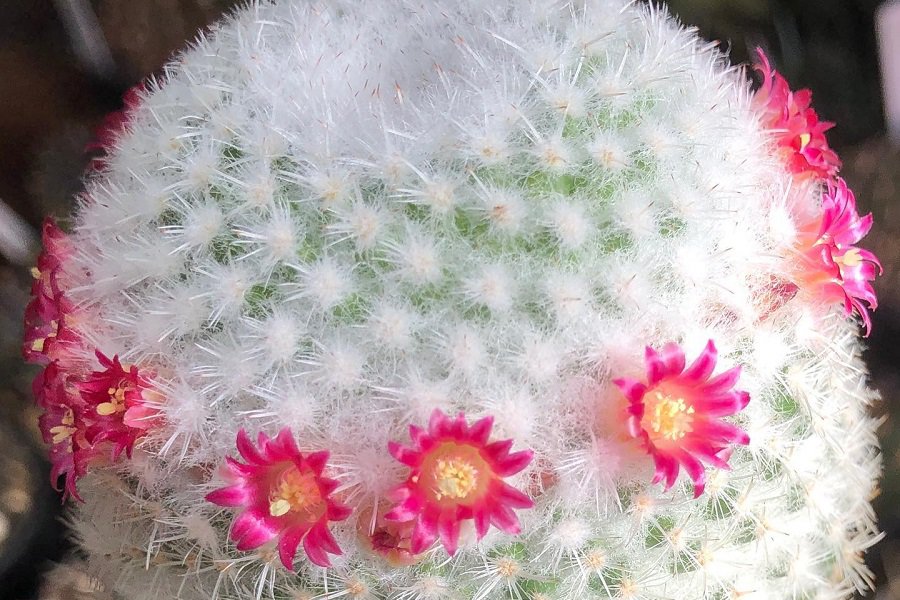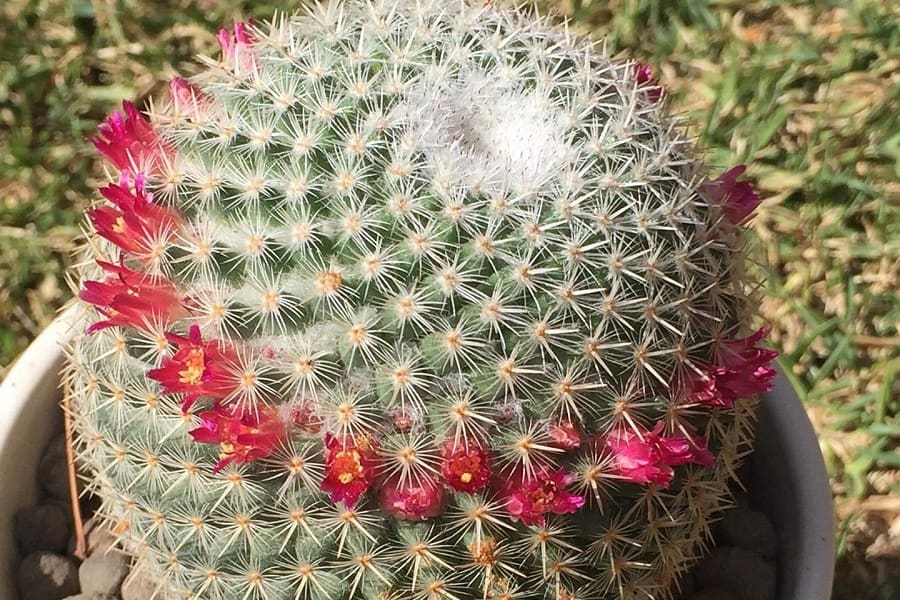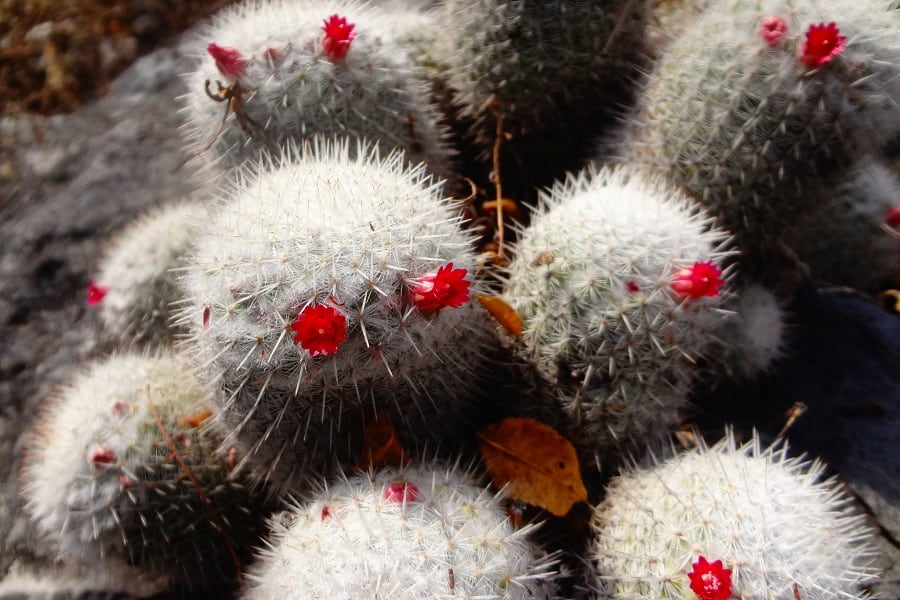Cactus Collectors Are Obsessed With Mammillaria albilanata – Here’s Why
Imagine a tiny cactus so fuzzy and adorable, it looks like a miniature plush toy! Meet Mammillaria albilanata, the velvety white cactus that cactus enthusiasts can’t get enough of. This petite plant with its globular shape and stunning pink flowers is winning hearts and shelves everywhere. Keep reading to find out why this cactus sweetheart is a must-have!

Contents
About Mammillaria albilanata
Mammillaria albilanata, also known as the white woolly mammillaria, is a small spherical cactus native to Mexico, Colombia, and the Caribbean islands. Its plump stem is almost entirely hidden under a dense coat of soft, white radial spines, giving it an irresistibly fuzzy appearance. During the growing season, vivid magenta flowers add pops of color to the snowy white plant body.
Despite its delicate looks, Mammillaria albilanata is a hardy little cactus that’s easy to care for indoors. At maturity, it grows to about 6-8 inches tall and wide, making it ideal for windowsill gardening or adorning shelves and desks. Its low-maintenance nature and captivating looks are key reasons why cactus fans can’t resist adding it to their collections!
Related Post:
39 Mammillaria Cactus Types and Care [With Pictures]
How to Care for Mammillaria albilanata
Light Requirements
These woolly cacti need plenty of bright light to thrive. Outdoors, they can handle full sun, while indoors they require at least 6 hours of direct sunlight daily. An unobstructed south or west-facing window is perfect. If natural light is insufficient, supplement with a grow light positioned about 6 inches above the plant for 12-14 hours per day.

Soil Medium
Mammillaria albilanata grows best in a well-draining cactus soil mix. Look for one containing ingredients like coarse sand, perlite or pumice to prevent waterlogged conditions. A gritty cactus-specific potting mix is ideal, but you can also make your own by combining equal parts potting soil, coarse sand or perlite, and a handful of small pebbles or gravel.
Water
These little fuzzballs are drought-tolerant and prefer infrequent but deep watering. The soil should dry out completely between waterings. As a general rule, water every 2-3 weeks in spring and summer, cutting back to once a month in fall and winter. Always use lukewarm water and ensure proper drainage to avoid rot.
Fertilizer
Feed your Mammillaria albilanata a balanced, water-soluble fertilizer formulated for cacti. Apply at half strength monthly during the spring and summer growing season. Hold off on fertilizing in fall and winter when the plant is dormant.
Temperature
Mammillaria albilanata does well in average household temperatures of 65-80°F during the day, and cooler at night. Protect it from freezing temperatures below 40°F. Cooler winter temps around 50-60°F will encourage better flowering and growth.
Potting & Repotting
Use a container with ample drainage holes and just a few inches wider than the plant. Repot every 2-3 years in late spring, moving to a pot an inch or two larger. Handle the plant gently to avoid dislodging the fuzzy spines.
Pests & Problems
This cactus isn’t prone to major issues when care needs are met. However, mealybugs, spider mites, or fungal infections can occur with overwatering or poor airflow. Use an insecticidal soap or neem oil to control pests, allowing the soil to dry between waterings to prevent rot or fungus.

Mammillaria albilanata Propagation
Mammillaria albilanata can be easily propagated from offsets, stem cuttings, or seeds to grow new plants. Here are the steps for each method:
From Offsets:
- In spring or early summer, carefully detach any offsets with some roots attached using clean scissors or a knife.
- Allow the offsets to callus over for several days before replanting.
- Plant the offsets vertically in a well-draining cactus soil mix, with just the top exposed.
- Don’t water for 5-7 days, then begin watering lightly when the soil is dry.
From Stem Cuttings:
- Use a clean, sharp knife to take 2-3 inch stem cuttings from a mature, healthy albilanata.
- Allow the cuttings to callus over for 7-10 days before planting.
- Fill a small pot with fresh cactus soil and make a hole for each cutting.
- Plant the cuttings vertically, burying just the bottom third of each piece.
- Don’t water for 2 weeks to allow the cuttings to take root.
- Once rooted, begin watering lightly when the soil is completely dry.
From Seeds:
- Use a well-draining seed starting mix and moisten it before sowing.
- Sprinkle seeds across the surface and cover with a thin layer of soil.
- Cover the pot with plastic wrap or a dome lid to maintain humidity.
- Place in a warm spot with bright, indirect light and keep the soil lightly moist.
- Remove the cover once seeds sprout in 2-4 weeks and allow to grow 6 inches tall.
- Transplant seedlings into individual pots with a cactus potting mix.
No matter which propagation method you choose, be sure to provide the new Mammillaria albilanata plants with the proper cactus care of bright light, infrequent watering, and excellent drainage for the best results!
